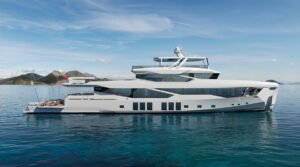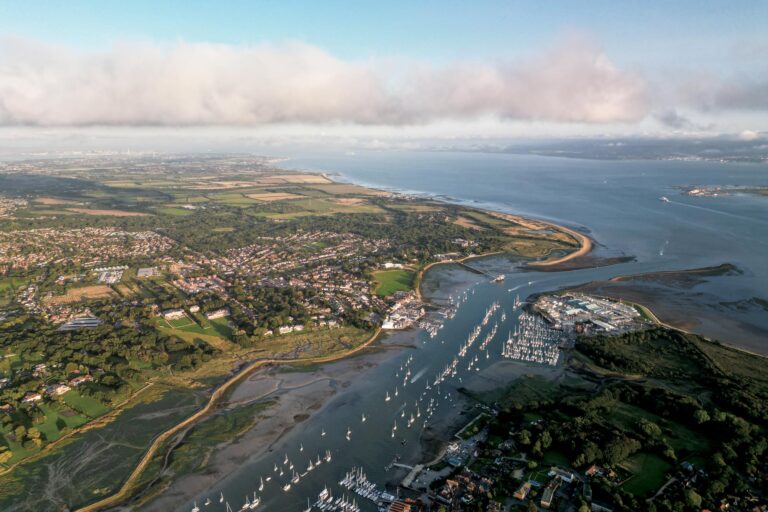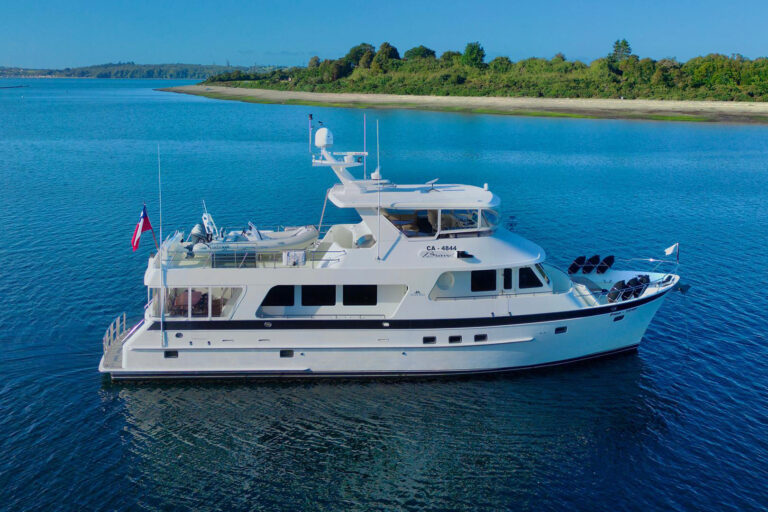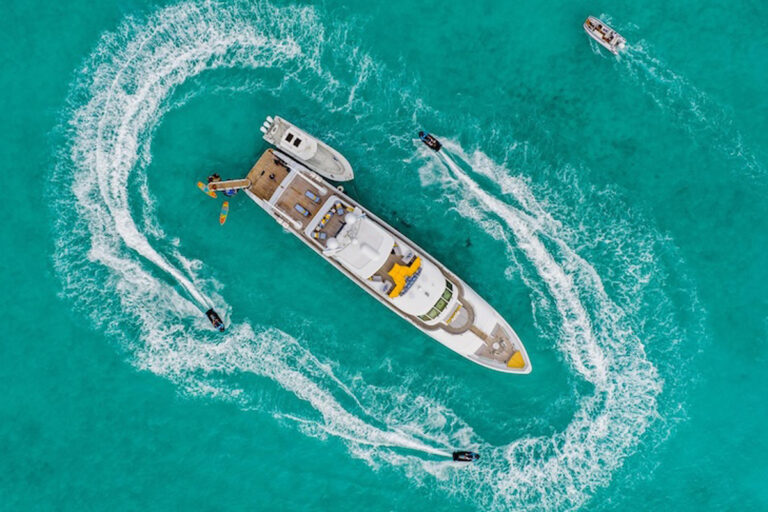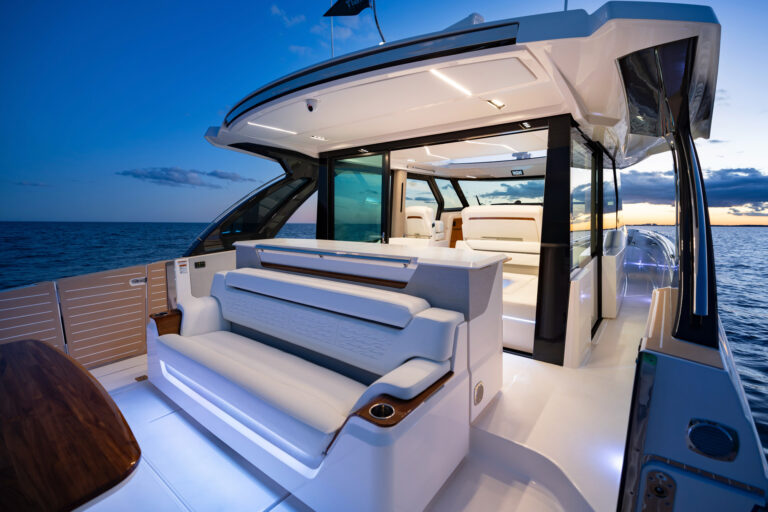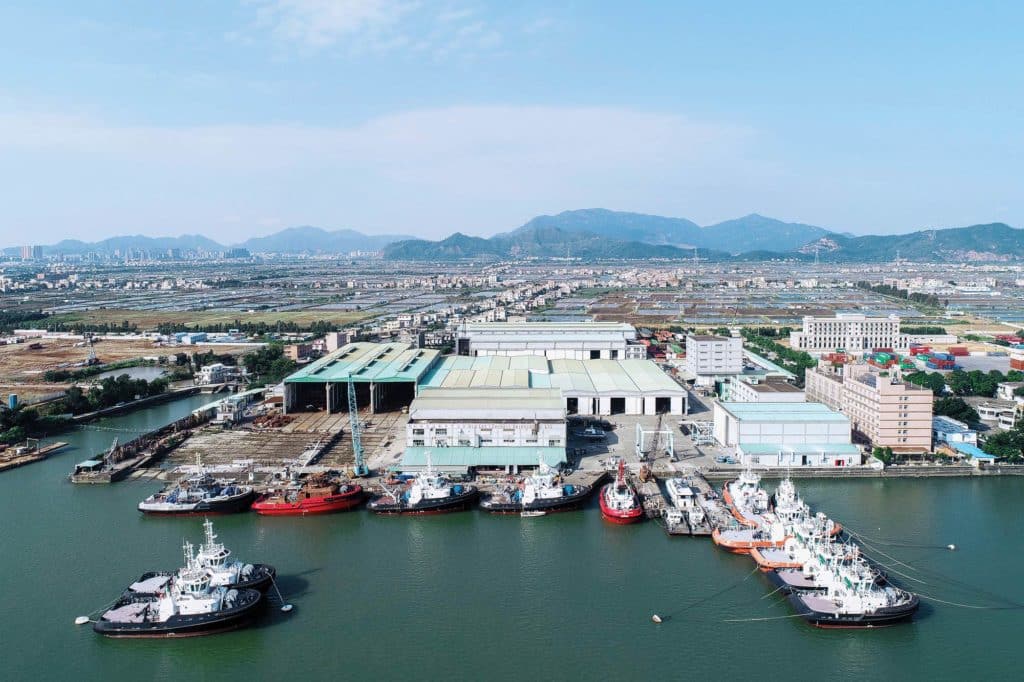
CL Yachts is slated to debut its new flagship, the CLX96, stateside next spring. I’ve seen preliminary modeling, and the CLX96 is a yacht that is modern in many ways. However, looking back at this builder’s ancestry, it’s also a model that reflects a lifetime of building vessels for the rigors of life on the sea.
CL Yachts is a pleasure-craft brand born out of parent company Cheoy Lee, a shipbuilder with commercial-boat beginnings dating back more than a century near Shanghai. Today, the yard is located in Zhuhai, China, along the Pearl River.
“My great-great-grandfather had joined a British merchant ship as crew for several years, and after his experience, he started his own shipyard, with much of his business being the repair and maintenance of British ships,” says Hans Lo, deputy director of CL Yachts. “From these humble beginnings, we eventually found ourselves in Hong Kong during World War II, while trying to evade the Japanese. We were fortunate during the war, and despite the Japanese army having seized much of our property, we were able to get it back and resume business.
“We’ve always built commercial boats in Asia, mostly for Hong Kong,” he adds. “As the oldest shipbuilders in Hong Kong, our history with our home city is long, and at one point, over 50 percent of ships operating in Hong Kong harbor were built by Cheoy Lee. Nowadays, our commercial boats include tugboats, offshore supply vessels, ferries, crew-transfer vessels, pilot boats, water taxis, etc.”
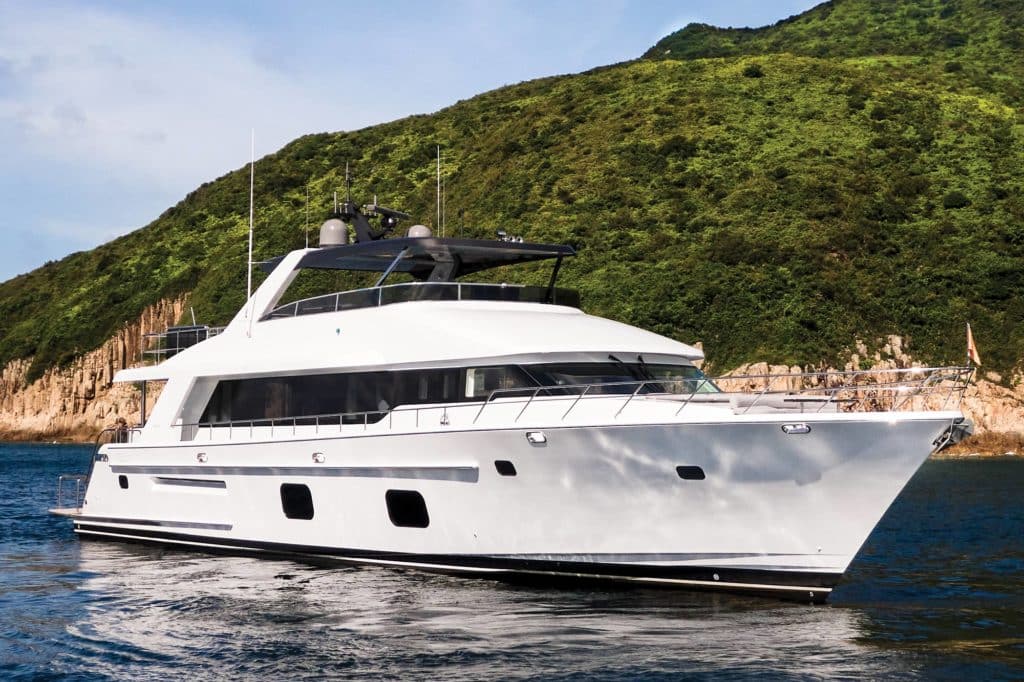
Building off its commercial business, Cheoy Lee expanded into the yacht market 60-plus years ago. In 1957, the yard built the 52-foot Sparkman & Stephens-penned Bermudan yawl Mah Jong. Three American yachtsmen commissioned the wooden yacht and then sailed it around the world back to the States. National Geographic chronicled the epic passage. (Mah Jong was refitted between 2014 and 2017 and is currently available for charter in Massachusetts.)
Cheoy Lee’s teak sailing yachts became popular, and eventually, the yard was building them at a rate of one per day. Then, in the 1960s, fiberglass hit stride as a modern construction material, and Cheoy Lee evolved with the times. In fact, the company was researching vacuum-bagging and foam-coring construction techniques as early as the 1970s. A common practice today to improve resin-to-glass ratios, reduce weight and reduce emissions, vacuum bagging was a technique virtually unheard of at the time.
Today, the yard has been building yachts via vacuum infusion for more than 12 years. Lo says that on average, the yard has a sizable team of craftsmen focused on its fiberglass builds.
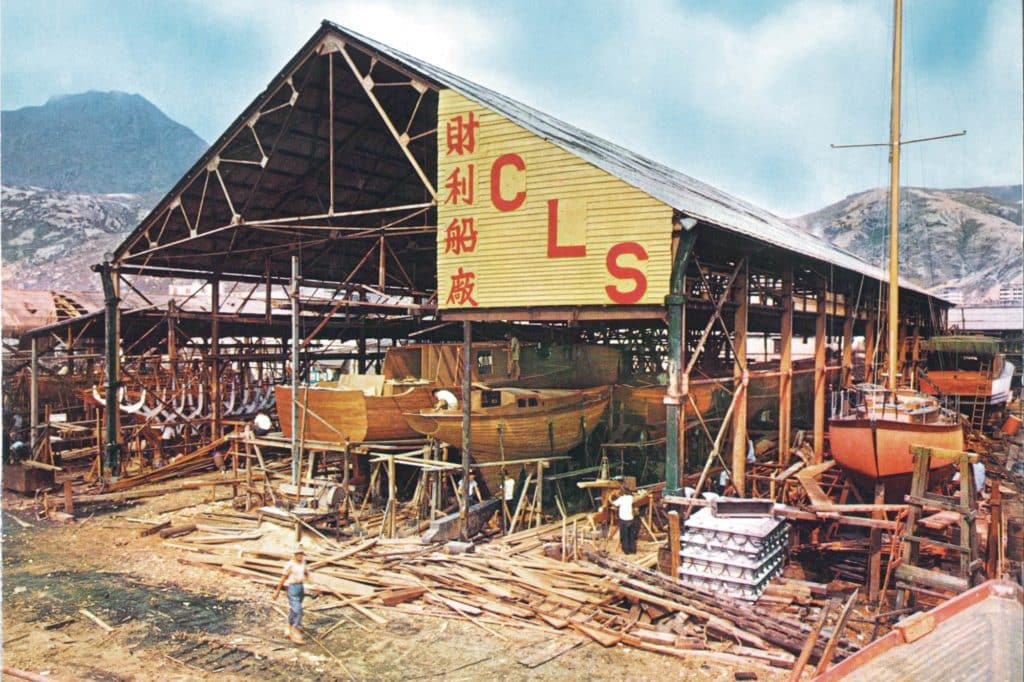
Cheoy Lee also pushed the boundaries of fiberglass construction in terms of length overall, launching the 130-foot Shango II in 1975, reportedly the world’s largest fiberglass yacht at the time. The yacht, like Mah Jong, is still plying the waters today as Nataly.
Because of its extensive research and innovation with fiberglass, Cheoy Lee was asked to work with Lloyd’s Register to develop its fiberglass workshop inspection and quality-assurance protocol, which is still used today for class certification. Cheoy Lee, and now CL Yachts, has contributed to thousands of builds over the decades. The CLB88 (see “The Next Generation,” this story), the first from-scratch model for CL Yachts scheduled to debut this month in Fort Lauderdale, Florida, is actually Hull No. 5,176. The yard’s yachts can be found cruising the waters around six continents.
Not limiting its builds to fiberglass, Cheoy Lee has created transatlantic-capable superyachts like the 151-foot Mazu with a steel hull, composite superstructure and bulbous bow meant for long-range cruising comfort in most sea conditions. The yard also builds in aluminum.
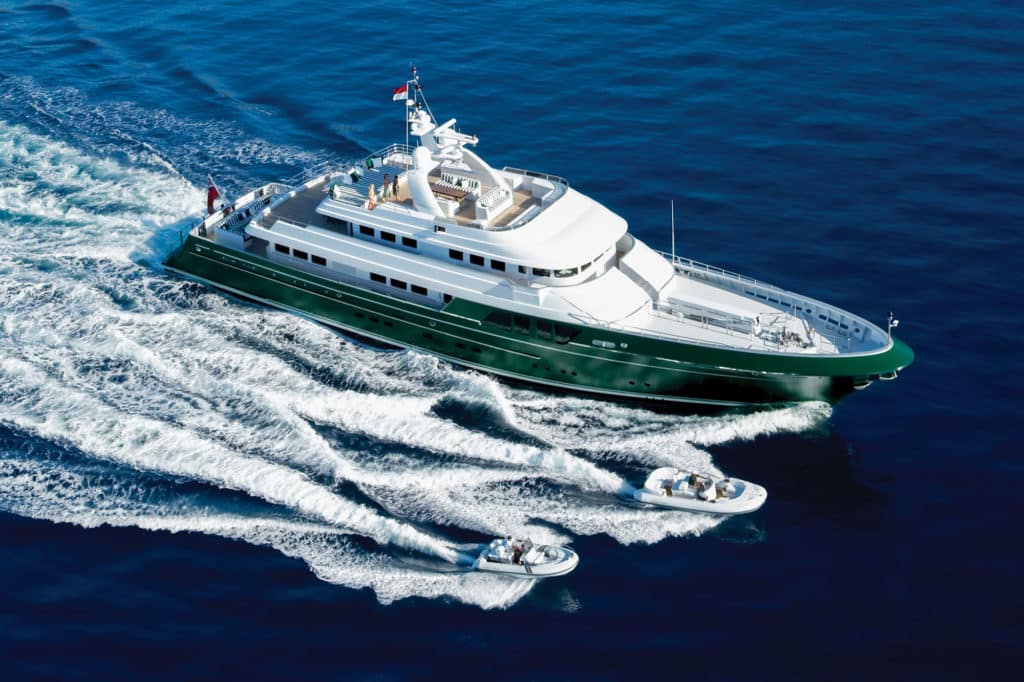
Cheoy Lee and CL Yachts do all their work in-house, from concept to creation. “The yard utilizes three- and five-axis CNC [routers] for everything from hull molding to furniture building, allowing for tight tolerances that would not be possible through traditional boatbuilding methods,” Lo says. “While 3D programs allow us to lay pipework and wiring relays, among other space-planning exercises, we still believe in the full-size mock-up, which we build for every new model. There is no substitute for a full-size mock-up when it comes to giving someone the sensation of space, and that is one of the advantages of our shipyard.”
Building on its legacy of constructing yachts like its commercial ships, CL Yachts is the next evolution for the shipyard. “CL Yachts represents a rededication towards the luxury sector and celebrates a new era for the company, looking towards the future with innovation at its core,” Lo says.
After the launches of the CLB88 and CLX96, Lo says, the company plans to fill out the model line between 50 and 100 feet length overall. Cheoy Lee will remain focused on larger yachts.
If past success is any indicator of future potential, then CL Yachts has the opportunity to continue this shipyard’s long history of innovation and expansion while carving out its own place in yachtbuilding history one design at a time.
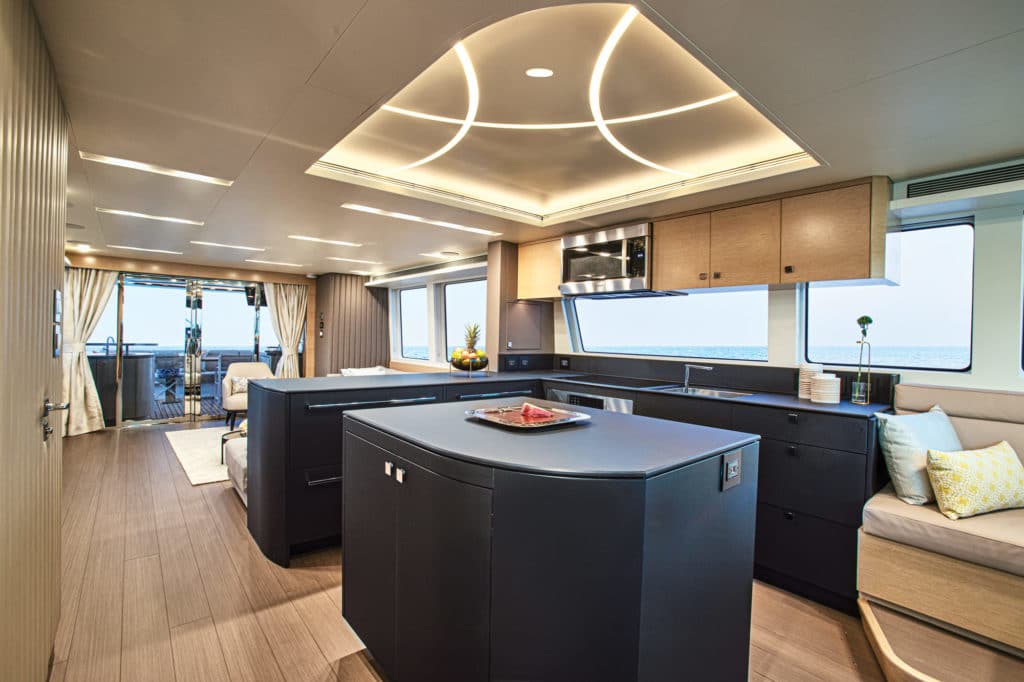
Built like Ships
“Building workboats that are meant to operate 24 hours of the day, seven days a week means that there are certain standards we apply to all our vessels—standards that are immediately seen when you enter our engine rooms or inspect our wiring relays,” says Hans Lo, deputy director of CL Yachts. “Things are also noticed immediately underway, with clients often commenting on the strength of our build, of how little creaking and flexing there is in the hull, how the center of gravity always feels low, and overall how the vessel inspires confidence to go farther, explore further. The demands of a working vessel are much greater than that of a pleasure craft, and that experience flows directly into every build that comes out of our shipyard.”
The Next Generation
The CLB88, scheduled to debut this month, is CL Yachts’ first from-scratch model. The designer is Jozeph Forakis, who also penned the in-build CLX96. The new look “creates a comfortable, clean environment using a sophisticated, subtle and spirited combination of modern and traditional materials,” says Hans Lo, deputy director of CL Yachts. “We call her ‘the motoryacht: re-imagined.’” Like the CLX96, the CLB88 has a straight sheerline that descends proportionally as it progresses aft (see: New Yachts column, August), adding a sense of movement in the vessel’s lines. A raked windshield adds to the motoryacht’s relatively sleek profile. The CLB88′s lines are supported by modern construction in fiberglass and carbon fiber. Hull reinforcement comes in the form of a 3,000-gallon integral fuel tank. Floated floors—not tied directly into the yacht’s support structure—should help keep the vessel quiet underway. Power is twin 1,600 hp Caterpillar C32 Acert diesels providing a reported 25-knot top hop. The yacht has a four-stateroom, five-head layout with two crew cabins.
Coming Soon
The CL Yachts CLX96 is a trideck yacht with a rugged explorer attitude. The superstructure has reverse-raked windows on the main and top decks, giving the stout-looking craft a lean-forward, shiplike appearance, seemingly daring the ocean to dance. The profile lowers gently in linear fashion as focus transitions from bow to stern, adding a sense of sleekness while accenting the CLX96′s proud bow.
Take the next step: clyachts.com



